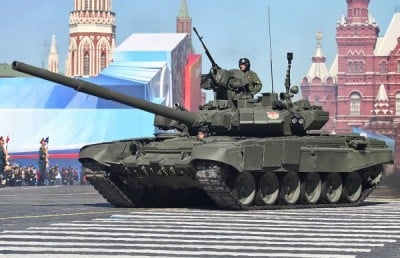America’s Low Yield Nuclear Bombs, Russia’s Nuclear Doctrine Is Being Distorted Once Again

On June 13, 2018, the Washington Post published an original piece by Paul Sonne that describes America’s potential use of the low-yield nuclear warheads that are to be installed on the future US B-61-12 nuclear bombs, as well as on the ballistic missiles carried by the Trident II submarines in the form of W76-2 warheads, in accordance with Washington’s 2018 nuclear doctrine. The article claims that the introduction of low-yield warheads and the idea of their potential use is being justified by the Pentagon as necessary due to the fact that Russia is allegedly prepared to use similar warheads against NATO countries, based on that nation’s current nuclear doctrine and because a purported strategy of “escalate to de-escalate” has apparently been “approved” by Moscow.
It should be kept in mind that the Military Doctrine of the Russian Federation, which has sections covering the potential use of nuclear weapons, says nothing about the power of the nuclear weapons that might be utilized, nor is there any mention of warheads with either high or “low” yields in TNT equivalents. Those sections of the official doctrine do not even categorize Russian nuclear weapons into strategic vs. tactical varieties.
Only one term is specified in Russia’s military and strategic posture: “nuclear weapons.” And only two circumstances are listed as a basis for their potential use: the first — only in response to the use of nuclear or other weapons of mass destruction against the Russian Federation and/or its allies; and the second — in the event of aggression against Russia that employs conventional weapons to the point that “the very existence of the state is threatened.” In other words, only reciprocal actions are permitted in either case.
Nor does the Russian nuclear doctrine list the countries or alliances against which nuclear weapons can be used.
It seems odd that the US still does not understand the basic tenets of Russia’s nuclear posture. And it must be said that this is not the first time that Western analysts have taken such an unprofessional approach. This has become especially glaring in the run-up to the next NATO summit, which will take place July 11-12 in Brussels.
On the other hand, the newest US nuclear doctrine, which was approved last February, specifies 14 justifications for the use of nuclear weapons, including “low-yield” warheads, which is how US arms experts classify nuclear warheads of 5.0-6.5 kilotons and below. These are precisely the sea- and air-launched warheads the Pentagon intends to utilize in accordance with its new concept of “escalating to de-escalate.” Under that theory, low-yield nuclear warheads can be employed by US nuclear forces on an increasing scale in a variety of regional conflicts, with the aim of “de-escalating” them, which might be accomplished with the help of a nuclear first strike.

This practice could cause a chain reaction in the use of nuclear weapons, involving not only “low-yield” warheads, but also more powerful nuclear explosives.
The practice being described — the potential use of low-yield nuclear weapons, which is a real fixation for the current US administration and is being discussed with increasing frequency in the US — suggests that America’s military and political leaders are committed to dramatically lowering the minimum threshold for their use and expanding the list of acceptable reasons to utilize them under real-world conditions. The adage from the past that everyone could relate to — “A nuclear war cannot be unleashed, because there will be no winners” — is now absent from the political statements that are being heard. It is clear that forces have taken the upper hand on Capitol Hill that are still incapable of imagining the consequences of a nuclear Armageddon. Such a path, even if this scenario proves unlikely, will inevitably lead to a potential undermining of the already fragile non-proliferation regime and a breakdown in the negotiations on establishing control over nuclear facilities, which — and this is not news — very few countries are taking part in at the present time.
For all these reasons, a dangerous future practice like this needs to be reexamined by Washington, in the interests of preserving global stability. In order to achieve this goal, the strategic guidelines for inflicting a first “preemptive and preventive” nuclear strike, as well as the continuing premise of “unconditional offensive nuclear deterrence,” which have remained unchanged since 1945, must be completely eliminated from American nuclear strategies.
These are not ultimatums, as someone defending US nuclear policy has already tried to portray them. This is a completely natural, logical, and sensible step, which would no doubt be positively received all over the world.
*
Vladimir Kozin, Ph.D., is an Expert Council member of the Russian Senate’ Foreign Relations Committee, Professor of the Academy of Military Science, former high-ranking diplomat, leading expert on disarmament and strategic stability issues.

